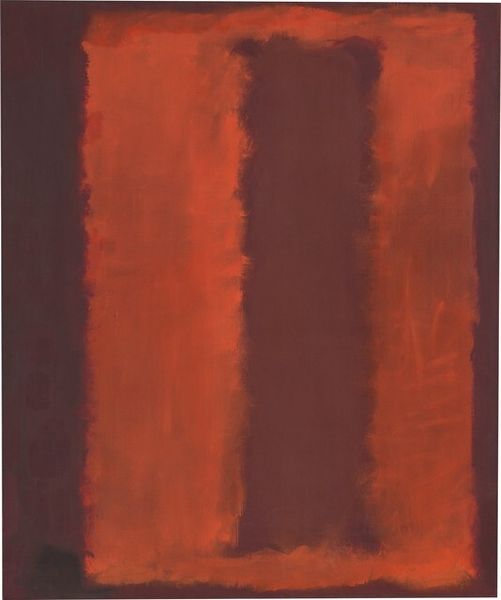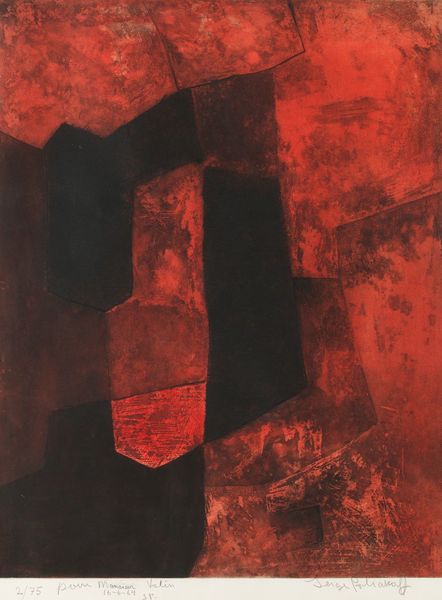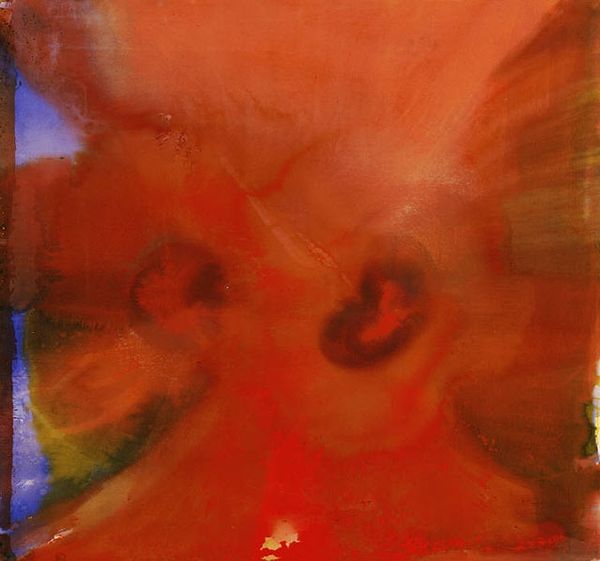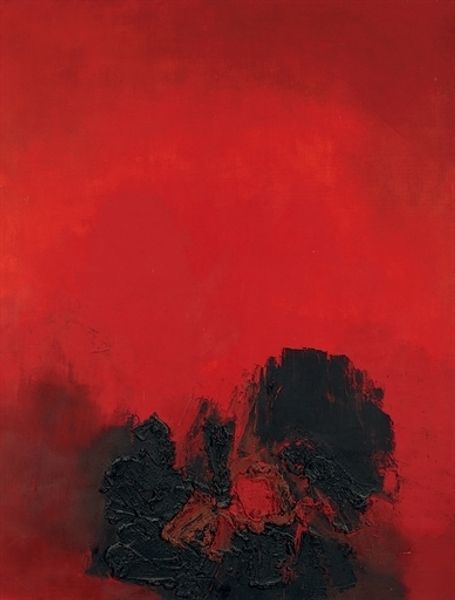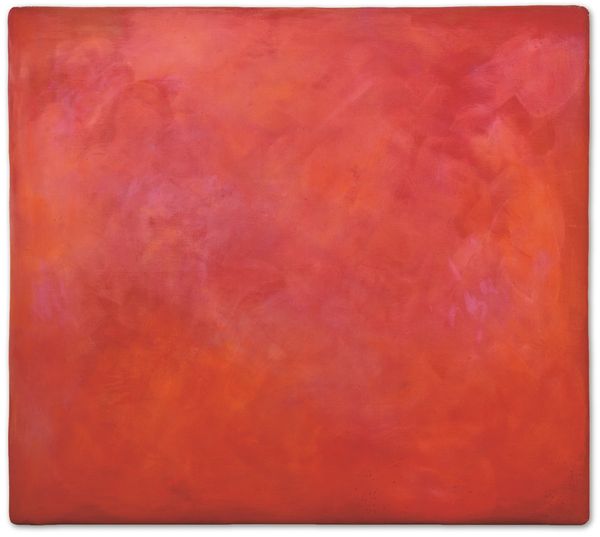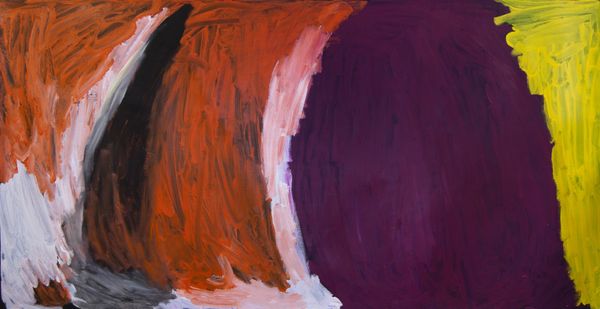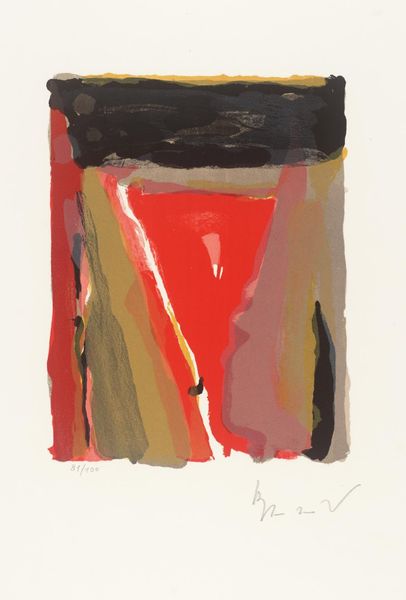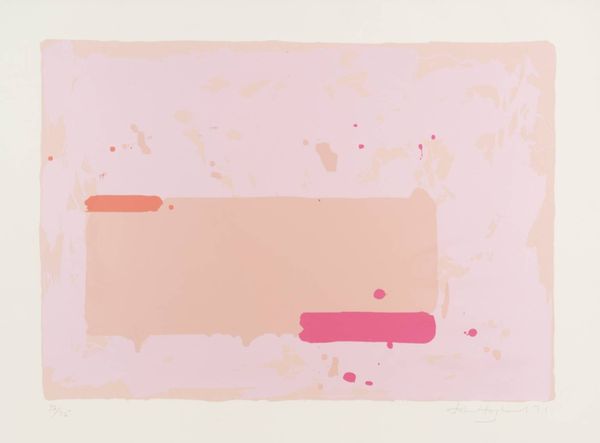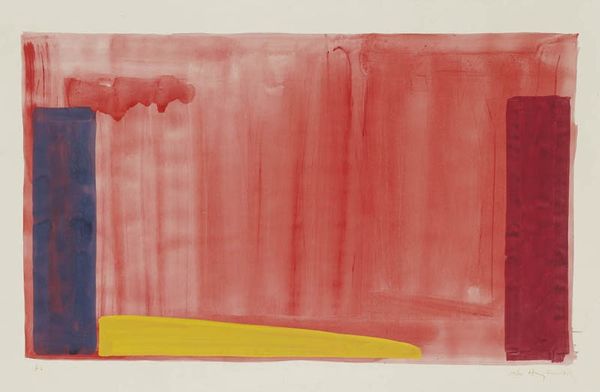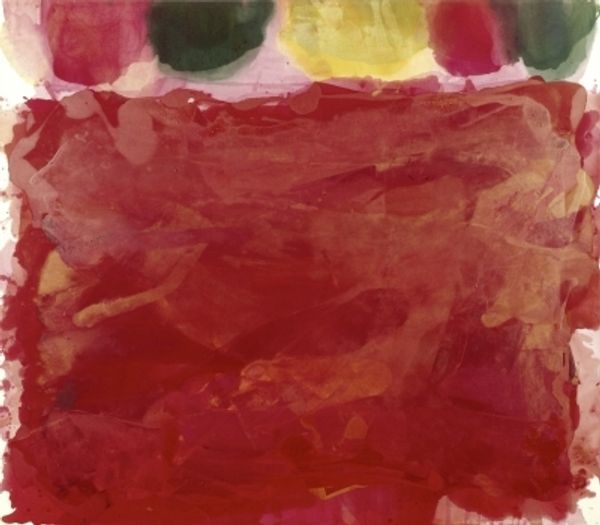
acrylic-paint
#
abstract-expressionism
#
abstract expressionism
#
acrylic-paint
#
matter-painting
#
abstraction
#
abstract art
Dimensions: overall: 191.14 × 213.36 cm (75 1/4 × 84 in.)
Copyright: National Gallery of Art: CC0 1.0
Curator: Willem de Looper's "Phoenix," crafted in 1970 using acrylic paint, presents an intriguing example of Abstract Expressionism. Editor: Immediately, I'm struck by the depth. It feels like staring into embers, that rich, almost pulsating red. It evokes a primal sense of warmth and a strange feeling of… potential. Curator: The dominance of the color red is central to its interpretation. Consider how de Looper manipulates its tonal range and saturation to create spatial ambiguity and hierarchical structure. Lighter areas recede, drawing attention to darker masses that seem to emerge. Editor: Hierarchical structure? That's a fancy way of saying it kind of glows, doesn't it? Like something smoldering under layers of ash. To me, it seems almost meditative. I could get lost in that center. Curator: Precisely. That central area, that nebulous form… it's key. It avoids concrete figuration, urging the viewer towards subjective interpretation. This piece shares traits of what’s sometimes referred to as "matter painting," where materiality and the artist's physical engagement with the medium are paramount. Editor: Matter painting. That makes me think about how physical art can be. How an artist grapples with the paint, leaves a trace. It also ties into the idea of a phoenix, born out of destruction and… well, matter. Curator: There's also the surface texture to analyze. Despite the smoothness commonly associated with acrylics, de Looper’s layering technique offers visual evidence of its own construction. It calls attention to the processes involved in creating art as an object itself, detached from the world. Editor: For sure. But art *can't* ever be fully divorced from the world, can it? I mean, even these reds and textures echo landscapes or emotional states. Think sunsets, or the flicker of anger...or love, even! It all feels very immediate and alive. Curator: It's an engaging intersection of visual strategy and spontaneous feeling that typifies Abstract Expressionism. Editor: And that's the joy of abstraction, isn’t it? It's that everyone can bring their own meaning and emotional response to what they are experiencing. It is like peering into a mirror of one’s own mind.
Comments
No comments
Be the first to comment and join the conversation on the ultimate creative platform.
